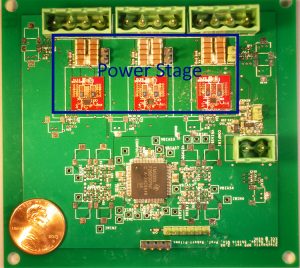Stochastic Approach to Asynchronous Differential Power Processing for True Maximum Power Point Tracking of Photovoltaic Sub-Modules
Felix Z. Hsiao with adviser R. Pilawa-Podgurski
Photovoltaic (PV) systems require modules biased at correct voltages and currents to produce the maximum amount of power. This is achieved through a process called maximum power point tracking (MPPT). In our project, MPPT is implemented by power converters that perform differential power processing (DPP), as shown in Figure 30, where only the power differences between modules are processed. Because the differential power is small compared to the total system power, very high overall efficiencies can be achieved.

Figure 30: The power stage of the converter performs DPP while the reminder consists of sensing and logic circuitry
For very large systems, delays in communication become unacceptably long for MPPT. Thus, we propose that the algorithms can be run asynchronously by using a stochastic process of idling times. Simulation results have shown steady-state tracking efficiencies over 99.8 percent. Work has also been done in creating a long-term, weatherproof setup consisting of 12 PV panels with which we can test our power converters and gather data. Preliminary laboratory results are promising; using DPP generates up to twice as much power. Next steps are improving control and field testing in our PV system. This project is funded in part by the Grainger Center for Electric Machinery and Electromechanics.